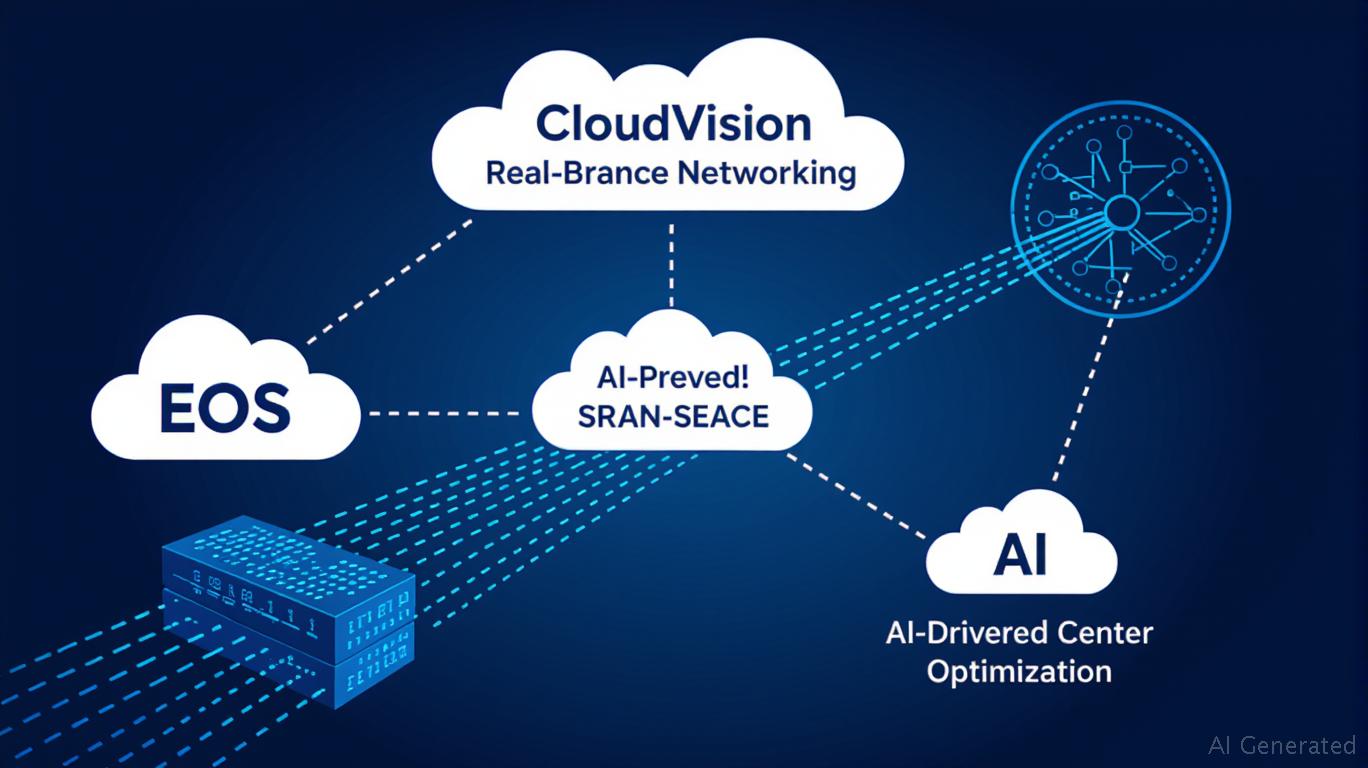Arista Networks: The Unstoppable Force in AI-Driven Data Center Infrastructure
In an era where artificial intelligence (AI) is reshaping industries, the race to build the infrastructure that powers these systems has never been fiercer.
(ANET) has positioned itself as a leader in this transformation, leveraging its software-driven networking expertise to dominate the high-speed data center and AI infrastructure markets. With robust financials, strategic acquisitions, and a relentless focus on innovation, is primed to capitalize on a $17 billion distributed cloud networking market by 2028. Here's why investors should take note.
The Software-Driven Edge: Why Arista Outpaces Competitors
Arista's core advantage lies in its software-centric architecture, which combines its Extensible Operating System (EOS) with the CloudVision platform. This stack enables real-time visibility, automation, and scalability—critical for managing the exponential data demands of AI workloads. Unlike rivals like
or Juniper, which rely on proprietary hardware-software bundles, Arista's disaggregated model allows customers to deploy AI clusters with unmatched efficiency.For example, its Cluster Load Balancing (CLB) feature optimizes traffic across GPU nodes in AI data centers, reducing latency by up to 30%. Meanwhile, CloudVision Universal Network Observability (CV UNO) provides AI-driven troubleshooting, identifying bottlenecks before they impact performance. These innovations are underpinned by $208 million in R&D spending in Q1 2025, part of a trend where R&D has grown 16% annually since 2023.
Execution in AI Data Centers: Revenue Growth and Market Leadership
Arista's financial performance underscores its strategic execution. Revenue hit $2.005 billion in Q1 2025, a 27.6% year-over-year surge, fueled by AI and cloud infrastructure demand. Its 64% gross margin remains industry-leading, even as competitors face margin pressure. The company's AI-related revenue is projected to hit $1.5 billion by 2026, driven by its 7000-series switches—the gold standard for hyperscale data centers.
The recent VeloCloud acquisition further solidifies its position. By integrating VeloCloud's SD-WAN expertise, Arista now bridges data centers with distributed branches and hybrid clouds, creating an end-to-end networking fabric. This move addresses a $10 billion SASE market and positions Arista to capture growth in zero-trust networking, where its CloudVision AGNI platform enables microsegmentation for secure AI workflows.
Partnerships with Cloud Giants: The Multi-Cloud Play
Arista's hardware-software stack is deeply integrated with hyperscalers like Google Cloud, AWS, and Microsoft Azure. For instance:
- Google Cloud's WAN service explicitly lists Arista's VeloCloud SD-WAN as a partner, enabling seamless connectivity between public clouds and on-premises data centers.
- AWS and Azure benefit from Arista's low-latency switches and SD-WAN solutions, which support hybrid AI workloads.
This ecosystem integration is a key differentiator. Unlike pure-play cloud providers, Arista offers neutral, multi-cloud networking infrastructure, making it indispensable to enterprises seeking to avoid vendor lock-in.
Financial Fortitude: Margin Resilience and Capital Returns
Despite near-term margin headwinds—Q2 2025 guidance hints at a slight dip to 63%—Arista's long-term profitability is intact. Its $8.3 billion cash hoard and $3.68 billion in free cash flow (2024) provide ample fuel for R&D and acquisitions. The recent $1.5 billion stock buyback also signals confidence in its valuation, even as shares trade at a 30% discount to their 52-week highs.
Critics argue the stock is expensive at 28x forward earnings, but this ignores the TAM's exponential growth. With AI's global infrastructure spending expected to hit $200 billion by 2027, Arista's share of this market could grow rapidly.
Valuation: A Long-Term Play on TAM Expansion
While short-term margin pressures and macroeconomic uncertainty pose risks, Arista's moat is too strong to ignore. Its $92 billion addressable market (including data center, SASE, and AI infrastructure) is expanding faster than its revenue, suggesting margin resilience as scale advantages kick in.
Investors should focus on long-term multiples. At current levels, ANET trades at 15x its 2026E earnings—reasonable for a company growing at 20%+ annually with 46% operating margins.
Conclusion: Buy the Dip
Arista Networks is the gold standard in AI-driven infrastructure. Its software-defined networking stack, strategic acquisitions, and partnerships with cloud giants create a moat that few rivals can match. While near-term margin dips and valuation concerns are valid, the long-term trajectory of AI and distributed cloud networking ensures Arista will remain a leader.
Recommendation: Buy ANET below $350, with a 12-month price target of $420. Historical performance supports this strategy: from 2020 to 2025, buying ANET on earnings announcement dates and holding for 20 trading days delivered an 81.79% return, though with a maximum drawdown of -35.8 million and volatility of 32.83%. The Sharpe ratio of 0.57 underscores moderate risk-adjusted returns, aligning with the company's growth trajectory.
The risks are manageable, and the upside from TAM expansion is too compelling to ignore.

Comments
No comments yet